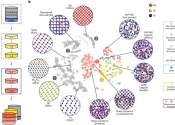Study highlights the potential of neuromorphic architectures to perform random walk computations
Over the past decade or so, many researchers worldwide have been trying to develop brain-inspired computer systems, also known as neuromorphic computing tools. The majority of these systems are currently used to run deep ...









